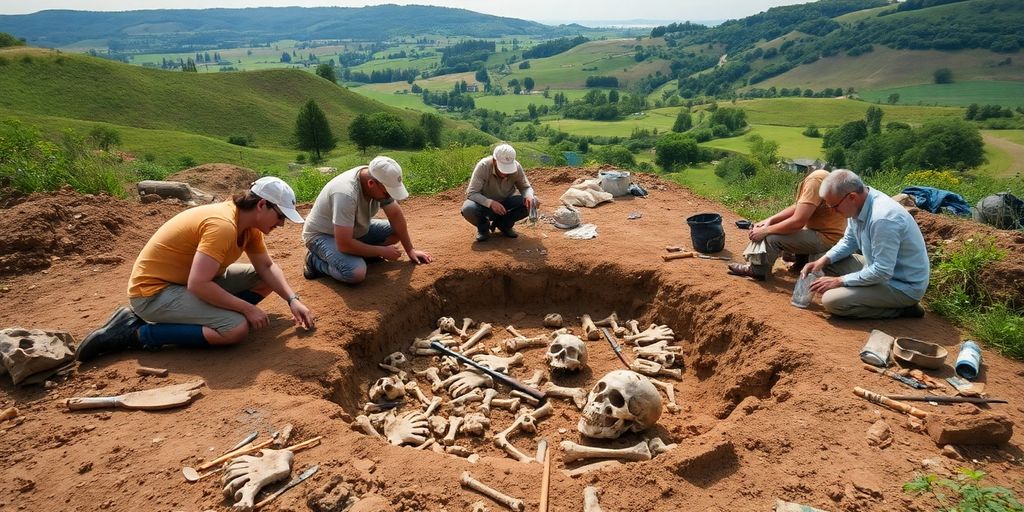Recent archaeological findings in Romania have unveiled the oldest evidence of hominin presence in Europe, dating back approximately 1.95 million years. This discovery, made at the Grăunceanu site in the Olteț River Valley, challenges previous understandings of early human migration and behavior, suggesting a more complex narrative of human evolution and dispersal from Africa.
Key Takeaways
- The Grăunceanu site is now recognized as the oldest hominin activity site in Europe.
- Evidence includes animal bones with cut marks indicating tool use for butchering.
- The findings suggest that hominins may have migrated into Europe earlier than previously thought.
- The research utilized advanced dating techniques, including uranium-lead dating, to establish the age of the fossils.
Significant Findings
The research team, comprising international experts, analyzed over 4,500 fossil samples from the Grăunceanu site. Their findings revealed that 20 bones exhibited anthropogenic modifications, with seven showing definitive butchering marks. These marks were identified through high-tech 3D optical profilometry, confirming the use of lithic tools by early hominins.
The fossils were dated using uranium-lead (U-Pb) dating, which indicated an average age of 1.95 million years. This discovery is significant as it predates the previously oldest known evidence of hominins in Europe by several hundred thousand years, which was around 1.4 million years ago.
Implications for Human Migration
The implications of this discovery are profound. It suggests that early hominins may have occupied a broader range of Eurasia much earlier than previously believed. The findings challenge the prevailing theory that hominins primarily migrated through the Near East before reaching Europe. Instead, the evidence points to a more complex migration pattern, possibly involving multiple routes and intermittent habitation.
Environmental Context
The Grăunceanu site, located in a temperate forest-steppe ecosystem, provided favorable conditions for early human habitation. Isotopic analyses of horse teeth from the site indicate a climate with mild winters and wet summers, which may have facilitated hominin dispersals during interglacial periods. The diverse fauna found at the site, including mammoths and rhinoceroses, further supports the idea of a rich ecosystem that early humans could exploit.
Future Research Directions
While the evidence of hominin activity is compelling, researchers have yet to uncover direct fossil remains of the hominins responsible for these activities. This absence raises questions about the specific species involved. The research team emphasizes the need for further exploration in underrepresented regions, particularly in Central Asia and Eastern Europe, to uncover more about early human migration and adaptation strategies.
In conclusion, the discovery at the Grăunceanu site not only redefines the timeline of human presence in Europe but also opens new avenues for understanding the complexities of early human behavior and migration patterns. As research continues, it is likely that more insights will emerge, further illuminating the story of our ancient ancestors.
Sources
- Oldest hominin evidence in Europe found in Romania, dating back 1.95 million years | Archaeology News Online Magazine, Archaeology News.
- The Oldest Evidence of Hominin Presence in Europe Found in Romania: They Hunted and Used Tools Over 1.95 Million Years Ago, La Brújula Verde.
- Romania discovers Europe’s oldest human traces dating back two million y – The Jerusalem Post, The Jerusalem Post.






